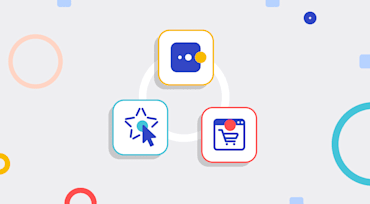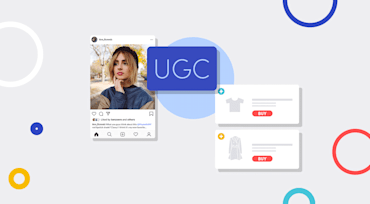Many content creators and consumers tend to regard video as visuals, but that’s only part of the experience. Immersive video content includes strong audio. Just like in a movie, the audio for video content comprises many components: the narrator or subjects, the background music that sets the mood and draws viewers in, sound effects, and so forth.

We all know the good ol', tireless <img> element, which has been a long-time go-to for inserting graphics into webpages. Time doesn’t stop, however, and neither do technological advancements. So, let’s get you up to speed with the element’s modern alternative: the <picture> element.

Consumers expect modern websites to be mainly visual. But, the more compelling and complex the related media is, the more data is involved, compounding the site’s weight. In today’s content-craving world, delivering unoptimized media can cost you because it leads to sluggish page loads, resulting in visitors abandoning your site in search of a faster alternative. In fact, a page load that takes more than three seconds can cause as many as 40% of your visitors to bounce. Given this competitive, digital-first environment, you can’t afford to lose page views, for time is of the essence.

tl;dr: An AWS-secured and optimized Cloudinary webhook listener for extending the Cloudinary service
Code: Github
A webhook is a communication medium for sending notifications from one platform to another about events that occurred. In place are user-defined HTTP callbacks that are triggered by specific events. When a triggered event takes place on the source site, the webhook listens to the event, collects the data, and sends it to the URL you specified in the form of an HTTP request.

Cloudinary’s Product Gallery widget, which launched in 2019, has enabled many brands to effectively and efficiently showcase their products in a sleek and captivating manner, saving countless hours of development time and accelerating release cycles. By adding Cloudinary’s Product Gallery widget with its customizable UI to their product page, retailers reap numerous benefits, often turning visitors into customers in short order.

Most business buyers prefer to research purchase options online, as do many shoppers. No wonder online retail sales in the U.S. rose by 32.4% in 2020—an impressive gain of $105 billion.
For B2B and B2C businesses, text-heavy websites are no longer adequate in attracting shoppers. Instead, engaging visual media—spin images, videos, 3D models, augmented reality—are becoming a must for conveying eye-catching details and differentiators about products or services.

The past decade has seen massive improvements in software tools that facilitate coding. In fact, a campaign is currently underway to promote building software with no-code tools like Bubble, which promise to be a boon for those not acquainted with the rudiments of programming.

User-generated content (UGC) is a powerful marketing tool. Not only does video complement marketing efforts for e-commerce by enabling customers to explore products in greater detail, but UGC also adds an element of trust. As a bonus, user-generated video is an exceptional opportunity for e-businesses to attract website traffic without their marketing team having to create promotional videos from scratch. User-generated content drives conversions and brand loyalty as a direct result of authentic interaction.

As expectations of websites and apps continue to grow, there is more pressure on brands to deliver new and innovative ways to reimagine their digital experience.
The challenge is many companies lack the systems and platforms to stay competitive in this digital revolution and keep up with modern technology. To stay one step ahead, brands have to continuously evolve their martech stack. However this is easier said than done. As marketing, developer, and creative teams look for new solutions they often end up down a rabbit hole. What starts off as an exciting investment to embrace a new technology, system or platform ends up turning into a complicated process and once the dust settles, teams often realize the limiting capabilities of investing in a single vendor.

Underscoring the growing relevance of online visual experiences, our fifth annual ImageCon conference on October 19-20 is going digital for the second year. We’re also proud to welcome Amazon Web Services, Inc. (AWS) and Contentful as our event sponsors. As much as we’d love to connect ‘In Real Life’ it’s still too early to do so safely. Fortunately our 2020 experience proved that a virtual event can certainly inform, educate, connect and entertain. Best of all, we’re able to engage with more of our customers and partners around the world as a virtual event is more accessible
